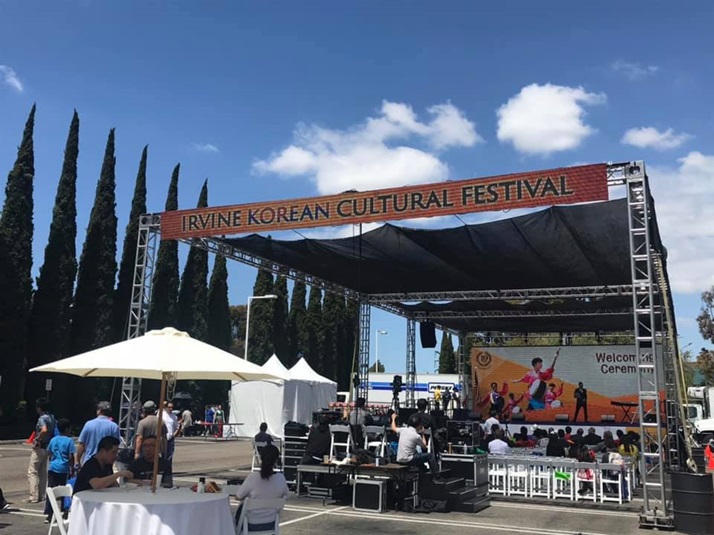On May 11th, a warm Saturday, the city of Irvine hosted its annual Korean Cultural Festival at the local government office from 10:00 AM to 5:00 PM. In its tenth-year anniversary, the festival celebrated with partners like Lotte, Disneyland, and platinum sponsor Kia. Stalls lined the perimeter of the Irvine Civic Center.
The lot’s attractions showcased local restaurants, like the popular Seoul Sundae, which served their trademark traditional blood sausage and spicy rice cakes. Newer businesses served fusion foods such as bulgogi tacos and kimchi nachos, attracting especially long lines of adventurous eaters.
The festival also featured educational booths on Korean traditions; one such booth was ran by textile artist Youngmin Lee, who gave lessons on making Korean wind chime ornaments and knotting bojagi. Other activities included hanbok wearing, kimchi making, and even a Choco Pie eating contest (courtesy of the festival’s Lotte partnership).
With only two exceptions, performances featured mostly traditional groups – unique for an Asian festival in Orange County. Among these, classical Korean orchestras dominated the lineup, with only two dance troupes: Ko’s Traditional Korean Dance Studio and the Korean American Youth Performing Artists (KAYPA).
Ko’s Studio’s claim to fame is supplying Shakira’s background dancers for her 2009 single “Did It Again”. The song’s music video and X-Factor London performance both featured Ko’s dancers. They are active in the Los Angeles community with a perfect rating on Yelp for their friendly service from local hobbyists that take lessons with the studio.
KAYPA is a dance company of all ages, from elementary schoolers to college students. Based in Buena Park and Chino Hills, they practice four times a week, and perform monthly. “Performing at Irvine Korean Festival was great. We got to perform many of our dances we were practicing for” said Claire Hwang, a KAYPA member entering the fifth grade this upcoming school year.
Karis Choi, an experienced dancer entering her sophomore year of high school agreed that the festival had been a fun experience. “Personally, being a performer, I’m always met with anxiety before going on stage,” she admitted, “but it feels rewarding to hear compliments as I pass by people who were in the audience and were watching me perform”.

[Source: Irvine Korean Cultural Festival on Facebook, Screenshot by Author, Rachel Kim]

[Source: Irvine Korean Cultural Festival on Facebook, Screenshot by Author, Rachel Kim]
As for Choi? “[I like helping people] become aware of a different aspect of Korean culture”.
Rachel Kim, Grade 12
Gretchen Whitney High School

